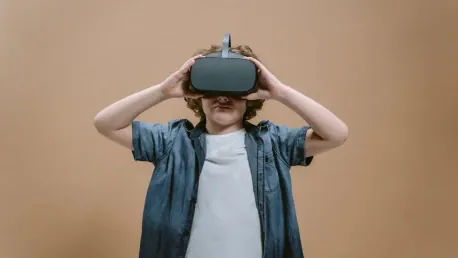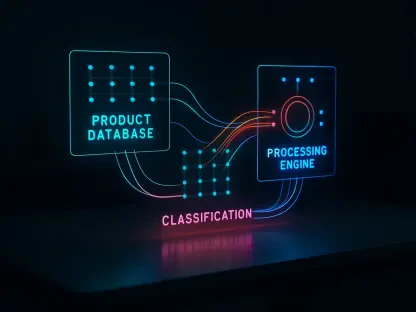In the rapidly evolving world of augmented reality (AR) and virtual production, Sony has introduced its inaugural camera tracking system, OCELLUS (ASR-CT1), aimed at addressing the increasing demand for seamless and efficient workflows. This innovative system promises to enhance both broadcasting and cinema by eliminating the need for markers and utilizing multiple sensors, which makes it highly compatible with various types of cameras, including cinema and broadcast varieties.
Enhancing Workflow Efficiency
Streamlined Data Processing
Theresa Alesso, President of Imaging Products and Solutions Americas at Sony Electronics, highlighted the rising need for workflows that can handle the complexities of virtual production and AR. As the industry continues to grow, capturing and utilizing metadata such as camera position and lens values becomes pivotal in streamlining both the pre-production and post-production processes. OCELLUS aims to meet these needs by providing real-time data, which significantly improves efficiency for content creators.
The accuracy and reliability of the OCELLUS system promise to revolutionize various virtual production scenarios, such as In-Camera VFX and AR applications. By offering precise camera position and orientation data during shooting, the system ensures that content creators can achieve the intended visual effects with minimal post-production editing. This real-time data processing capability not only reduces time spent in post-production but also enhances the overall quality of the final output, making the production process more cost-effective and efficient.
Comprehensive Compatibility
At the core of OCELLUS is its sophisticated setup consisting of a sensor unit, a processing box, and three lens encoders. This configuration is compatible with an array of cameras, including Sony’s Cinema Line and system cameras, as well as non-Sony cameras. The integration of advanced features such as five image sensors and Sony’s Visual SLAM (Simultaneous Localization and Mapping) technology ensures stable, marker-free tracking in both indoor and outdoor environments. By removing the need for physical markers, Sony has simplified the production setup, making it more adaptable to various shooting conditions and scenarios.
In addition to its hardware capabilities, OCELLUS also supports a robust software ecosystem. For Sony cameras, additional metadata regarding focus, iris, and zoom values can be obtained via the camera’s SDI output and transmitted in real-time via Ethernet. This level of detail ensures that every aspect of the shot is recorded accurately, facilitating seamless integration with digital environments during post-production. If the lens does not support metadata acquisition through the camera, lens encoders can be attached, ensuring that no data is lost or inaccurately captured.
Advanced Features and Installation
Real-Time Data Transmission
The OCELLUS system supports the comprehensive recording of tracking data, camera and lens metadata, timecode, and file names, making it highly beneficial for post-production workflows. Key features include a compact and lightweight sensor unit equipped with five image sensors, which ensures high-quality data capture. The easy installation process is further facilitated by NATO rail mounting parts, allowing for quick and secure setup. The system also excels in real-time data transmission to CG rendering software like Unreal Engine, providing instant feedback and adjustments during the shooting process.
This real-time data processing capability is a game-changer for content creators, as it allows for immediate visualization of how live-action elements will interact with computer-generated environments. This not only speeds up the production process but also ensures that any potential issues can be addressed on the spot, rather than during the post-production phase. The processing box, equipped with Genlock input, Timecode input, SDI input/output terminals, and lens encoder connection terminals, ensures that the system is versatile and can be integrated into a wide range of production setups.
Recording and Metadata Integration
The ability of OCELLUS to record data on SDXC memory cards further enhances its utility in various production environments. This feature allows for easy data transfer and backup, ensuring that all captured data is securely stored and readily accessible for post-production. The system’s support for recording detailed metadata, including timecode and file names, ensures that every frame of the production can be accurately tracked and referenced, making the editing process more efficient and less prone to errors.
This level of detail is particularly crucial in complex virtual productions where multiple elements need to be synchronized accurately. By providing a comprehensive solution for both capturing and recording data, Sony’s OCELLUS system sets a new standard for efficiency and accuracy in AR and virtual production workflows.
Market Impact and Availability
Industry Demonstrations
Sony will showcase the capabilities of OCELLUS at the NAB Show in Las Vegas, demonstrating its potential to industry professionals and content creators. These demonstrations will offer an in-depth look at how the system can be integrated into existing workflows, showcasing its efficiency and ease of use. By providing real-world examples of its application in both AR and virtual production, Sony aims to highlight the transformative impact of OCELLUS on the industry.
The demonstrations are expected to draw significant attention from both established production companies and independent creators, who are increasingly looking for ways to minimize production costs while maximizing output quality. By presenting OCELLUS in a live setting, Sony underscores its commitment to innovation and its ability to meet the evolving needs of the production industry.
Market Entry
OCELLUS is set to be available in Australia, adding a versatile tool to the arsenal of content creators in the region. Priced at $62,000 AUD RRP, the system offers a high return on investment for production companies looking to enhance their workflow efficiency. With its ability to integrate seamlessly with a wide range of camera systems and its advanced real-time data processing capabilities, OCELLUS is poised to become a staple in the virtual production and AR markets.
The market entry of OCELLUS is expected to drive further innovation in the industry, as competitors strive to develop their own solutions to match the capabilities of Sony’s system. This competitive landscape will ultimately benefit content creators, as it will lead to more advanced and cost-effective tools being made available.
A New Standard in Production
In the swiftly advancing realm of augmented reality (AR) and virtual production, Sony has launched its first camera tracking system, OCELLUS (ASR-CT1), to meet the growing demand for flawless and efficient workflows. This cutting-edge system aims to revolutionize both broadcasting and cinema by doing away with traditional markers and incorporating a range of sensors. By leveraging these multiple sensors, the OCELLUS system provides high compatibility with numerous camera types, including those used in cinema and broadcasting. This innovation not only simplifies the production process but also enhances the overall quality and flexibility. It addresses the industry’s need for more integrated solutions, allowing for smoother transitions and greater creative freedom. With the OCELLUS system, Sony is poised to set a new standard in the fields of AR and virtual production, contributing to the seamless fusion of technology and artistry.









